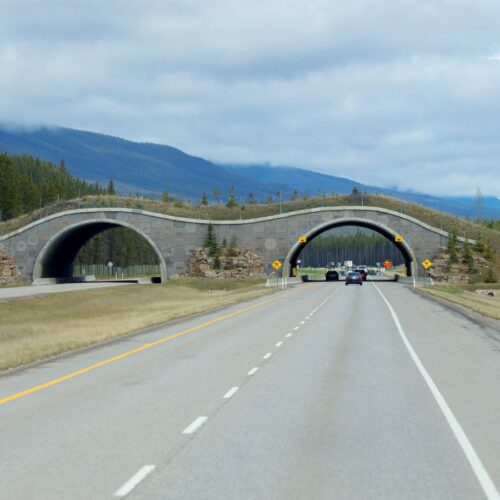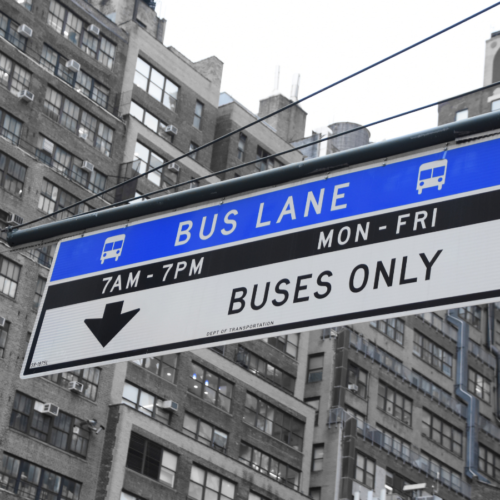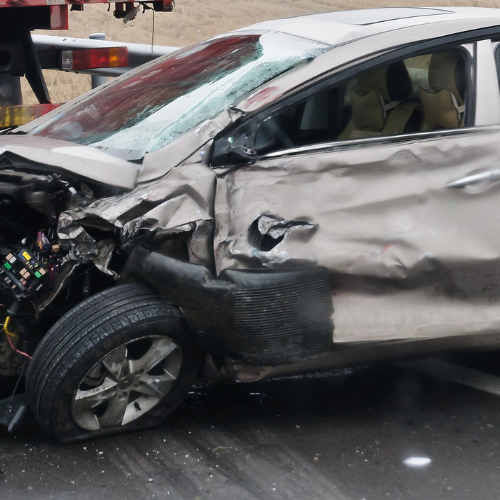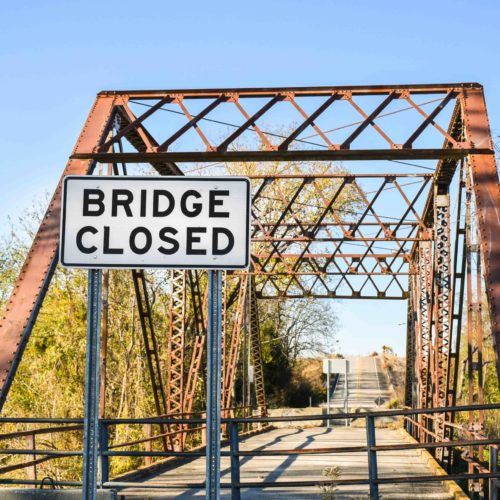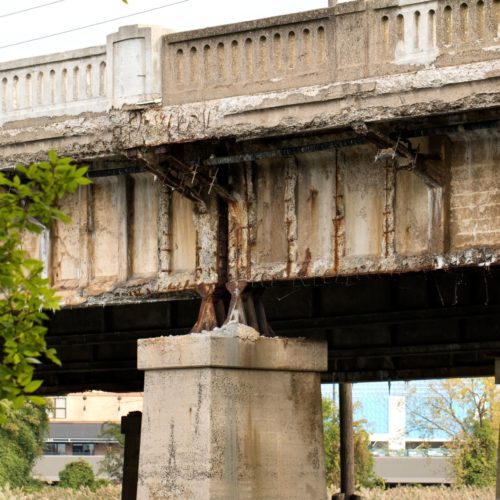Solving the infrastructure investment challenge
This article appears in the 2021-22 edition of Perspectives.

The Newport Bridge in Rhode Island. Credit: Canva
The nation’s infrastructure, once a model of modern engineering and a critical driver of economic growth, is in crisis.
Last March, the American Society of Civil Engineers (ASCE) gave the nation’s infrastructure a C− in its quadrennial report card, which assesses the state of 17 categories, including roadways, bridges, ports, the energy grid, and stormwater infrastructure. “It’s certainly not a grade that you’d be proud of,” ASCE Executive Director Tom Smith told CNN in March.
The latest assessment reflects a steady disinvestment over the past several decades. Current spending on infrastructure, as a percentage of the nation’s gross domestic product, is at its lowest level since the Eisenhower era. The impacts can be felt throughout the economy, in terms of longer travel times over poorly maintained roads, unreliable energy and water utilities, and higher costs for businesses to manufacture and distribute goods.
Soon after taking office, President Joe Biden announced proposals to shore up the nation’s roads, bridges, highways, and other staples of a modern economy, but there has been considerable debate about how to pay for the improvements. ASCE estimates a price tag of $6.1 trillion to meet the nation’s infrastructure needs by 2030 and expects that federal, state, and county governments will contribute $3.5 trillion, leaving a $2.6 trillion gap. Coming up with the difference will require transformative action from Congress, states, and the private sector, ASCE warns.
One potential solution that is generating attention at the federal level is the concept of a national infrastructure bank. Congress is considering several bills, including HR 3339, which would create a $5 trillion national infrastructure bank that would initially be seeded with $500 billion in U.S. Treasury holdings from private investors.
A revenue-neutral funding source
During a virtual meeting of the CSG East Transportation Committee in August, Alphecca Muttardy, an adviser to the Coalition for a National Infrastructure Bank, an advocacy group, said the bank would offer a “revenue neutral” way to bring in more private funding and serve as an alternative to raising gasoline taxes or other mechanisms to pay for improvements. Muttardy said the bank would lend money the same way a commercial bank does — but at significantly lower interest rates. States and local governments could seek loans to meet their infrastructure needs and repay the loans with general revenues, user fees, tolls, or capital budget funds. As the infrastructure projects are completed and the loan repayments are made, the funds are returned to the system to generate more infrastructure loans.
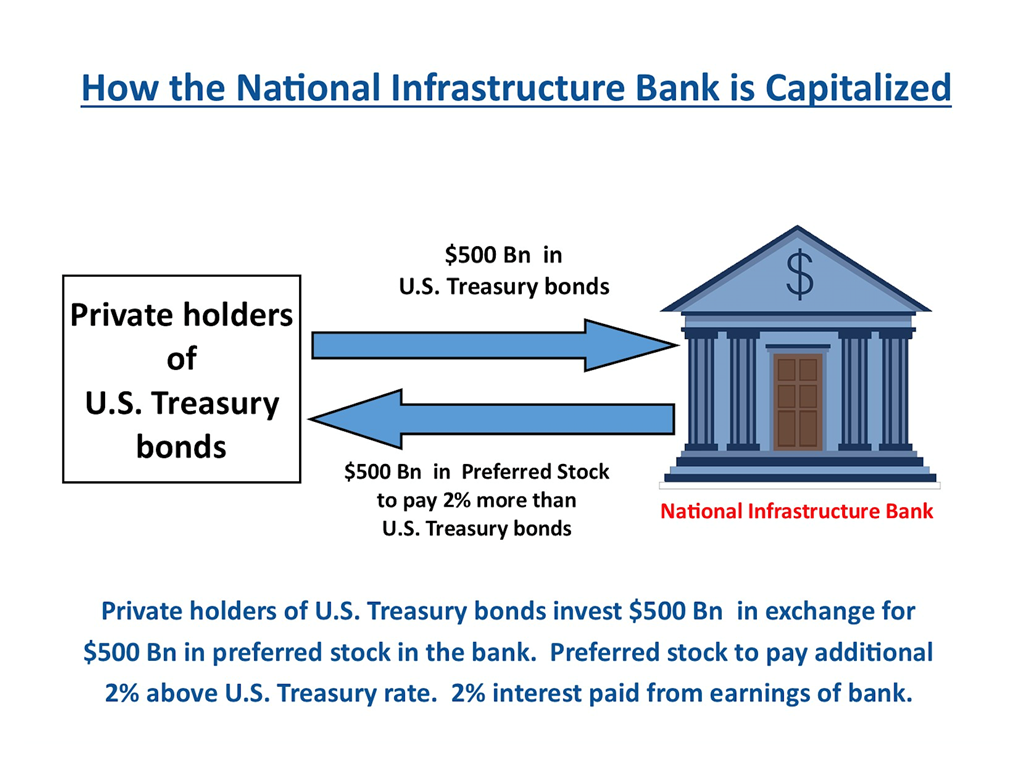
Courtesy of the National Infrastructure Bank Coalition
Muttardy, a macroeconomist who worked at the International Monetary Fund for 25 years, said the coalition’s plan envisions implementing forward-thinking infrastructure projects that embrace broad public policy goals and go beyond merely fixing things. These projects could include building high-speed rail to reduce traffic congestion and pollution from tailpipes; repairing outmoded sewer systems that overflow during rainstorms and are a significant source of water pollution; and bundling projects to create efficiencies, such as replacing the aging, lead drinking water pipes that are buried beneath many northeastern roadways before the roads themselves are fixed.
Muttardy said the $1 trillion bipartisan Senate infrastructure proposal approved in August falls far short of the capital needed to finance all of the upgrades. The national infrastructure bank would make up the difference.
“The idea here is this bank will top up whatever Congress manages under the baseline spending for transportation and provide enough to finance everything,” she said.
Proponents say the bank would create up to 25 million jobs and work with state and municipal governments to invest in a wide range of projects, including roads, bridges, and transit; transmission; dams, waterways, and ports; airports; rail; total broadband access; drinking water and wastewater systems; and hazardous and solid waste.
“What we know is that for every dollar that these entities would borrow for an infrastructure project, that would plow $3 to $7 back into the economy,” said Muttardy.
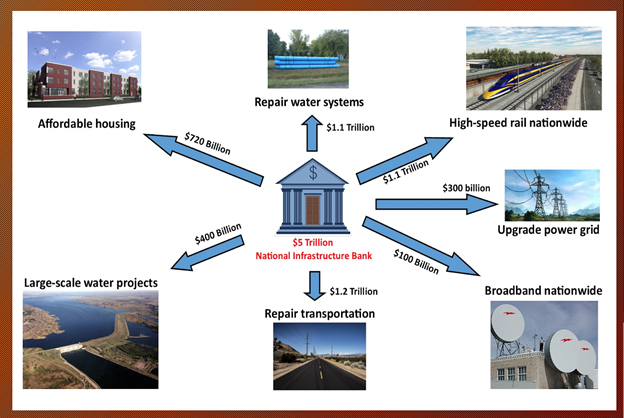
Courtesy of the National Infrastructure Bank Coalition
In her presentation, Muttardy noted that the bank is modeled on four previous public institutions that have financed infrastructure projects since the nation’s founding. In the 18th century, President George Washington and Treasury Secretary Alexander Hamilton created the First Bank of the U.S. to finance roads, bridges, canals, and industrial centers. During the mid-20th century, the Reconstruction Finance Corporation underwrote the New Deal’s massive public works projects and helped finance the U.S. involvement in World War II, she said.
State infrastructure banks
For the past 25 years, states have had experience administering revolving infrastructure investment funds, known as state infrastructure banks (SIB), which offer loans and credit enhancement products to public and private sponsors of certain highway construction, transit, and railroad projects.
In 1995, Congress established a state infrastructure bank pilot program, and since then 33 states have created SIBs, but only about a dozen states have actively used them to finance highway infrastructure. From 2007 to 2016, these SIBs provided $200 million in average annual financing for highway infrastructure, but this accounts for only about 1 percent of the federal highway and mass transit funding that state and local governments received each year, according to testimony provided in May to the U.S. Senate Finance Committee from Joseph Kile, director of microeconomic analysis at the Congressional Budget Office.
However, many states that have utilized their state bank investment programs have been able to stretch their state and federal dollars to meet some of the demands on financing critically needed infrastructure projects.
At least 17 state legislatures have introduced resolutions in support of the national infrastructure bank bill. The Rhode Island Senate approved a resolution this year, S 0029, which was co-sponsored by the CSG East Transportation Policy Committee vice chair, Rhode Island state Senator Louis DiPalma. The resolution notes that 22 percent of Rhode Island’s bridges are structurally deficient — the worst proportion in the nation; many rural roads are in poor condition; and the distribution network for the state’s largest water treatment facility, which is nearly 100 years old, has higher lead concentrations than are permitted by the U.S. Environmental Protection Agency.
“Everybody agrees we have to fix our crumbling infrastructure; the problem is nobody knows how to pay for it. The national infrastructure bank will supercharge our industry and small businesses,” said DiPalma.
States throughout the CSG East region face similar infrastructure challenges to Rhode Island. The needs of CSG members from Puerto Rico and the U.S. Virgin Islands are significant as well, given the ongoing fiscal and logistical challenges that have plagued the rebuilding efforts following the devastation from Hurricanes Irma and Maria in 2017.
Critics of the current proposals have expressed concern that there could be a bias toward building new projects rather than tackling current maintenance needs.
In its report, the ASCE warns that the nation will pay a steep price if it fails to act: By 2039, continued underinvestment in infrastructure will cost the United States $10 trillion in gross domestic product, which amounts to a $3,300 charge for the average American household and 3 million in lost jobs.
“The time to act is now,” said DiPalma. “Delaying any longer will result in increased costs, as many projects will be beyond repair and require full replacement.”
